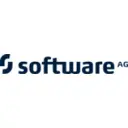Overview
What is TIBCO Messaging?
TIBCO offers high-performance messaging technology, and gives customers flexibility and unique choice between Commercial and Open-source messaging solutions. TIBCO Messaging is a comprehensive messaging portfolio available to meet a wide variety of use cases and deployment models.
Awards
Products that are considered exceptional by their customers based on a variety of criteria win TrustRadius awards. Learn more about the types of TrustRadius awards to make the best purchase decision. More about TrustRadius Awards
Reviewer Pros & Cons
Pricing
Entry-level set up fee?
- No setup fee
Offerings
- Free Trial
- Free/Freemium Version
- Premium Consulting/Integration Services
Would you like us to let the vendor know that you want pricing?
9 people also want pricing
Alternatives Pricing
Product Demos
TIBCO EMS Tutorial | Introduction To TIBCO EMS| Mindmajix
Product Details
- About
- Competitors
- Tech Details
- Downloadables
- FAQs
What is TIBCO Messaging?
Real-time data is fundamental to the digital business that must operate at speeds and agility, demanding a messaging system with performance, throughput, and availability to ensure data is delivered efficiently and securely when and where it is needed.
Messaging enables real-time data distribution between disparate endpoints wherever they are hosted, while also being a central component of event-driven and streaming data architectures. TIBCO provides both open source and commercial messaging technology to enable all of the use cases needed to connect complex, large-scale information landscapes including cloud integration, event processing, streaming analytics, business app connectivity, IoT, mobile, and web.
TIBCO's messaging technology gives customers the choice between Commercial and Open-source messaging solutions:
- TIBCO Enterprise Message Service™: The Jakarta-based messaging for store and forward messaging services.
- TIBCO FTL® : High performing, low-latency, enterprise and cloud-ready messaging
- TIBCO eFTL™: TIBCO messaging for REST, web, and mobile-based devices
- TIBCO® Messaging Castle - Powered by Apache Kafka®: Secure, open source, and real-time streaming data pipelines
- TIBCO® Messaging Quasar - Powered by Apache Pulsar™ : Multi-tenant, high-performance open source solution for server-to-server communication
- TIBCO® Messaging - Eclipse Mosquito Distribution: Connect IoT devices using MQTT to any TIBCO Messaging components
TIBCO Messaging Competitors
TIBCO Messaging Technical Details
| Deployment Types | On-premise, Software as a Service (SaaS), Cloud, or Web-Based |
|---|---|
| Operating Systems | Windows, Linux, Mac |
| Mobile Application | No |
| Supported Countries | global |
| Supported Languages | English |




